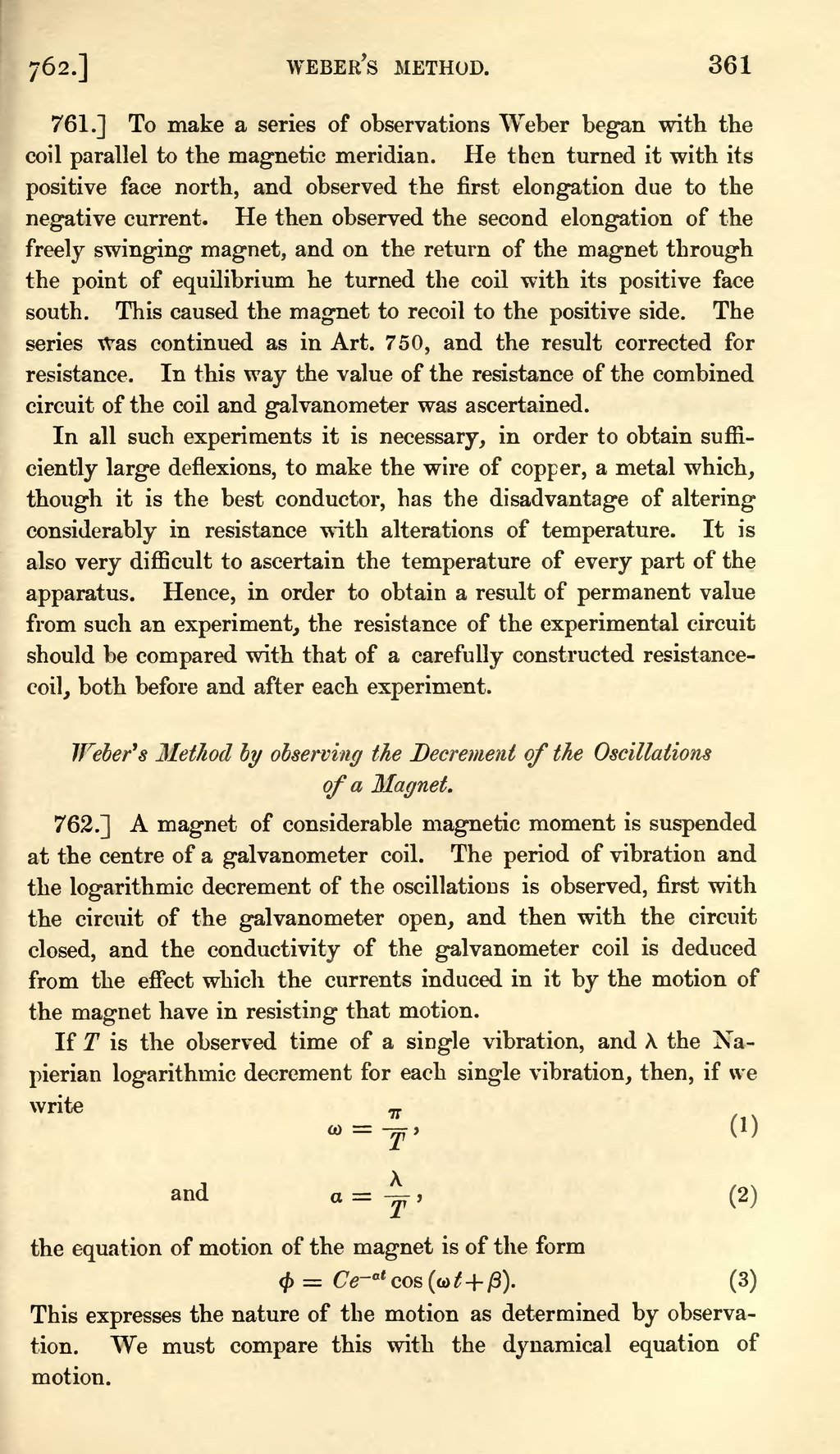761.] To make a series of observations Weber began with the coil parallel to the magnetic meridian. He then turned it with its positive face north, and observed the first elongation due to the negative current. He then observed the second elongation of the freely swinging magnet, and on the return of the magnet through the point of equilibrium he turned the coil with its positive face south. This caused the magnet to recoil to the positive side. The series was continued as in Art. 750, and the result corrected for resistance. In this way the value of the resistance of the combined circuit of the coil and galvanometer was ascertained.
In all such experiments it is necessary, in order to obtain sufficiently large deflexions, to make the wire of copper, a metal which, though it is the best conductor, has the disadvantage of altering considerably in resistance with alterations of temperature. It is also very difficult to ascertain the temperature of every part of the apparatus. Hence, in order to obtain a result of permanent value from such an experiment, the resistance of the experimental circuit should be compared with that of a carefully constructed resistance- coil, both before and after each experiment.
Weber's Method by observing the Decrement of the Oscillations of a Magnet.
762.] A magnet of considerable magnetic moment is suspended at the centre of a galvanometer coil. The period of vibration and the logarithmic decrement of the oscillations is observed, first with the circuit of the galvanometer open, and then with the circuit closed, and the conductivity of the galvanometer coil is deduced from the effect which the currents induced in it by the motion of the magnet have in resisting that motion.
If is the observed time of a single vibration, and the Napierian logarithmic decrement for each single vibration, then, if we write > =
��and a = y , (2)
the equation of motion of the magnet is of the form
| . | (3) |
This expresses the nature of the motion as determined by observation. We must compare this with the dynamical equation of motion.




